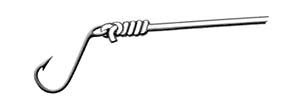The humble bream is one of the most common table fish and coincidentally is also one of the most commonly caught species when fishing the Australian waters.
There are 3 species of bream, eastern black, silver (aka yellow fin) and black.
Black and Yellowfin bream
Yellowfin bream, sometimes known as the silver bream are generally a silver to olive-green colour that may vary slightly depending on the water they are living in. They get their name from their pectoral, anal and ventral fin having a yellowish tinge. Likewise the black bream that inhabit the darker rivers around mangrove areas.
Breams can be found throughout Australian mainland and Tasmanian systems. They inhabit the coastal waters, and shallow inshore reefs. Bream can grow up to 4kg but generally, are caught in between the 0.5 kg to 1 kg range.
NSW Legal size & Bag Limit: 25 cm, 20 in total.
Lures/Bait: Breams will take a range of live baits including prawns, worms, yabbies, squid, bread, chicken breast fillet, and chicken gut. On the lure side of things, small hard bodied lures are great fun for the beginner fisho targeting bream. Soft plastics such as minnows can also be successful with sizes less than 4" range.
Tackles: Lightweight tackle spinning reels make bream fishing challenging and is sure to interest even the most amateur of fishermen.Main lines of about 6lb are adequate
Bream Fishing Tip: Breams are opportunist feeders and can be found in shallowish waters. They are extremely active at the magical hours of dawn and dusk. Breams also have a special liking to bread so burleying with bread wont harm your chances.








